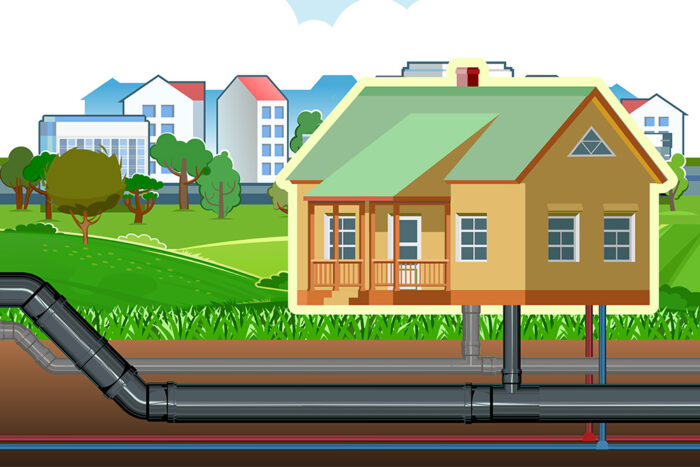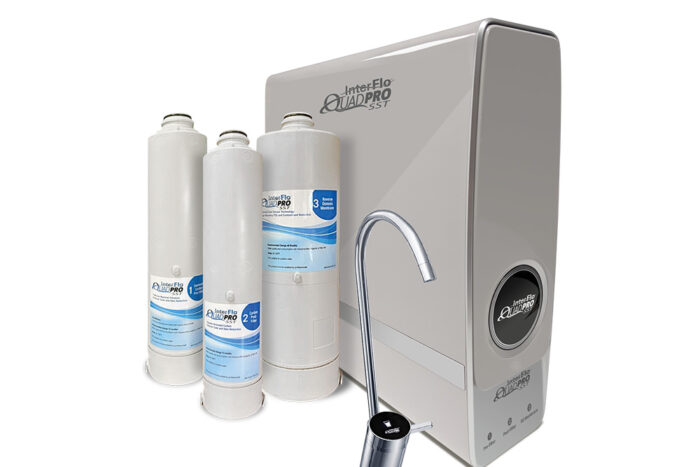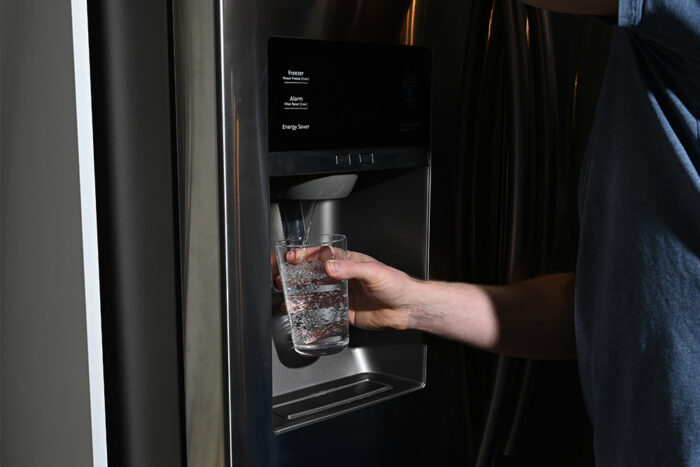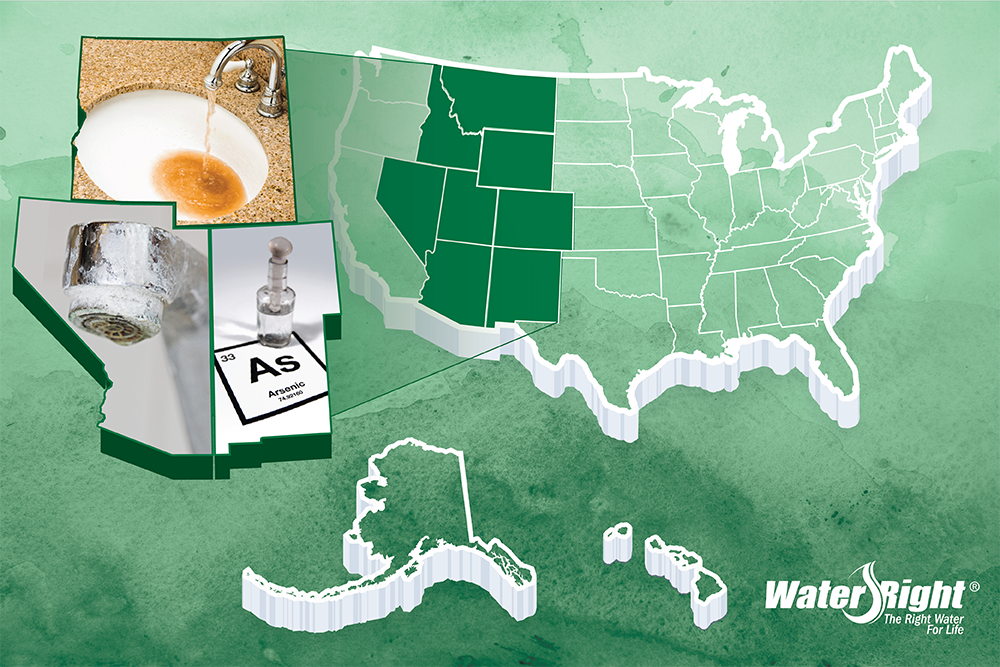Some of the most breathtaking scenery in the United States can be found along the Rocky Mountain range and in America’s Southwestern states.
For all its beauty, however, the geological make up in this region can create some water quality challenges that may frustrate and perplex you as a homeowner. To get a better understanding of what causes those problems and how to solve them, we spoke with Water-Right Regional Sales Managers Jeff O’Callaghan and Mark Russell. They train and assist our network of water treatment professionals in the following states:
- Arizona
- Colorado
- Idaho
- Montana
- Nevada
- New Mexico
- Utah
- Wyoming
Hard water tends to be one of the most common problems in many of the Mountain states.
“Part of the reason is because of the mountains themselves,” Russell explains. “Water dissolves the granite and limestone, and those dissolved minerals create hardness. Hard water can dry out your skin, it affects the efficiency of water using appliances, and can fade the color of your clothing.”
Russell adds that both well water and city water tend to have high hardness in this region. He says Utah and Idaho in particular have very hard water. Water softeners are designed to remove the calcium and magnesium that cause hard water. But, there may be more involved that a softener will not affect. Other contaminants in the water require special media or additional filtration to make the water right for you. Plus, hardness levels can fluctuate based on long-term weather trends, specifically rainfall or the lack of it.
“Aquifers can fluctuate,” Russell says. “When they’re down, the mineral content rises. When it’s full, you don’t have as many minerals.”

O’Callaghan says hardness is definitely an issue in Colorado, but that state also sees a wide range of other water quality concerns. That’s why Water-Right’s exclusive Crystal-Right (CR) media is often used. CR-100 is designed to reduce hardness, iron, and manganese, while correcting mild acidity.
“Colorado is interesting because it has just about every type of water there is,” O’Callaghan says. “You’ll find hardness of more than 100 grains in the southern area around Durango, high iron and manganese in the western part of the state, and acidic water in the mountains with many low-producing wells from fractured aquifers.”
O’Callaghan adds that hydrogen sulfide and methane gas are also common problems. These contaminants cause smelly water, which may not pose health risks, but makes water unpleasant for drinking and bathing.
“Arizona also has many variations in its water,” says O’Callaghan. “But, the difference is more subtle from one region to another with high hardness being the predominant issue.”
Water Treatment for Contaminants
Russell says states further north in the Mountain region, Wyoming and Montana, face some distinct water treatment difficulties.
“Wyoming is a very mineral-rich state,” Russell says. “So, it’s not unusual to find arsenic, uranium, or even petroleum byproducts in the water. There are a lot of tar sands throughout the northeast part of Montana. If you drill a well, you’re almost always going to find the effects of that. It’s not an easy type of water to treat, and it all depends on what it’s combined with.”
O’Callaghan says oil industry contamination is yet another problem in Colorado, too, where lake water is used as a water source.
“Some of these surface waters are above maximum contaminant levels because of petroleum pollution,” he says.
Russell explains that there’s more than one way to treat problem water found in the Mountain states. Our water treatment experts will present these solutions to homeowners and let them decide on the course of action they find appropriate.
“I was at a home where the customer had a fairly tight budget, so we gave them a good, better, best scenario,” he recalls. “We could try to treat it with the good, but something may need to be added to make it better. If that’s not satisfactory, we can add one more piece of equipment to create the best scenario.”
Homeowners notice water quality issues such as hardness, hydrogen sulfide, iron, and even pH levels because those issues alter the taste, smell, or appearance of water. Yet, the more serious contaminants can’t be detected by human senses. That’s why we constantly remind homeowners with well water to have it tested at least once a year.
“There’s no way to tell if there’s a potentially serious problem with your water by looking at it,” Russell says. “You don’t know if there’s bacteria in the water or what the arsenic and nitrate levels are. Anything that’s associated with health is a mystery until you have a water test done.”
“In Colorado, people have to be aware of the lead and uranium levels in well water in the mountainous regions,” O’Callaghan says. “Arizona has above the recommended levels of arsenic, fluoride, radioactive elements, and nitrates commonly found in water sources.”
A reverse osmosis system is often the right solutions for homeowners looking to improve the quality of drinking water and make it safe for their family members to consume. But, since water quality changes over time, homeowners should still have well water tested annually.
Russell advises homeowners to make sure they find a trustworthy local professional who understands water contamination issues in the region and knows the right treatment options. When it comes to water quality, do-it-yourself installation could be a mistake that costs you time and money. Once you’ve established a relationship with a local water quality expert, you’ll have someone you can trust with all your home’s water treatment needs.
“The customer service that comes after the sale is just as important as what’s done before equipment is installed,” Russell says. “The Water Quality Association (WQA) has a certification program for water treatment specialists and installers. At Water-Right, we encourage our dealers to pursue these certifications because we know it gives homeowners confidence they’ve hired someone who knows what they’re doing.”
Find the right contractor for you.
Recent Homeowner Resources

Are You Drinking Contaminated Water? New Rules Help Homeowners Identify Lead Risks

Introducing InterFlo® QuadPro SST!



